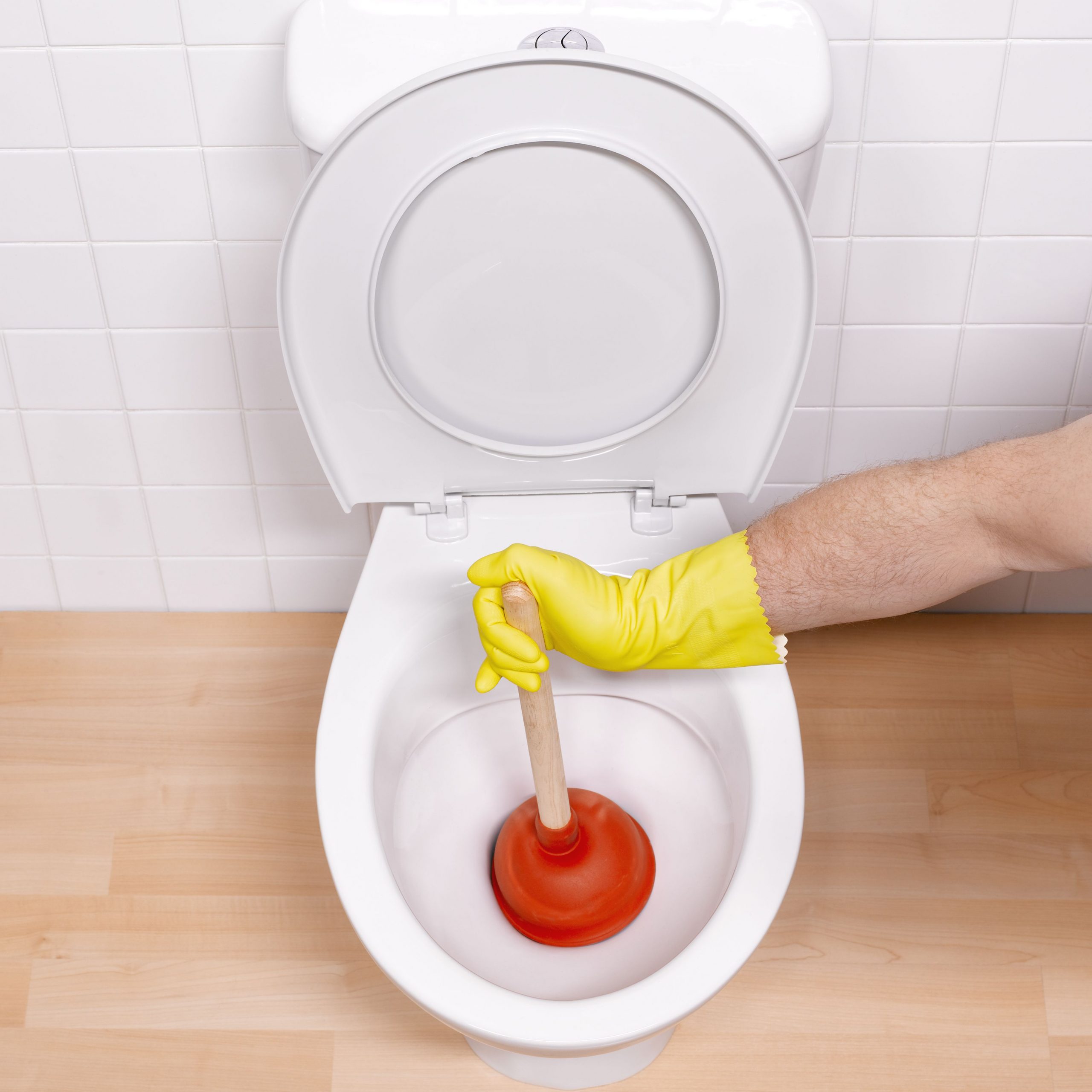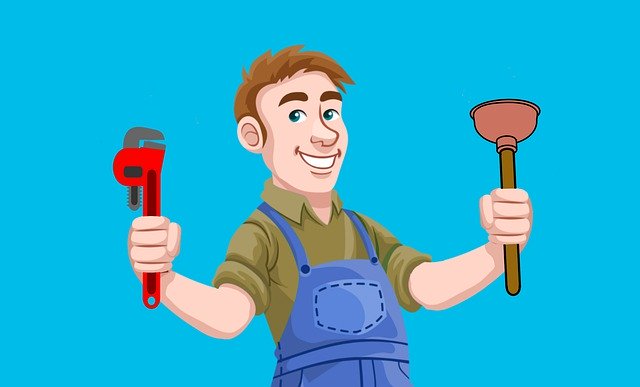Is It Bad to Leave A Clogged Toilet Overnight?

A clogged toilet is always dreaded, especially when it’s late at night or after a long day of work. It’s even worse if you’re at a friend’s house or a party.
It’s tempting to shut the lid and let the clog sit, but that’s realistically not a good idea. While it’s usually not catastrophic to let a clogged toilet sit overnight, it’s best to resolve the issue quickly and immediately. The risk does not outweigh the reward. Plus, nobody wants to wake up and find their toilet is still clogged and unusable.
In instances like this, you don’t want to find out. The most common issue from letting a clog sit is that it overflows. Your bathroom is then left flooded with dirty water.
If your toilet is older, or your pipes aren’t in the best condition, the clog could cause a leak elsewhere in your home. The added pressure can exacerbate a slow leak that’s extended for the duration the toilet’s clogged.
The first thing you’ll want to do before beginning any attempt to unclog your toilet is to shut the flapper valve in the back of the toilet. This will prevent it from overflowing and allow some of the rising water to drain. By no means should you flush the toilet again hoping to clear the blockage.
Also be careful of using any nearby drains. In most cases, only the toilet is blocked, but it’s not unheard of that the blockage occurs somewhere further in the pipe. If your adjacent sink or shower are blocked up additionally, it means there’s either a blocked pipe or backed up septic tank.
It’s fortunate that in most cases a clogged toilet is an easy fix. These can be done with household items and require little effort from you.
A plunger is your best bet when dealing with a clogged toilet. They’re reliable, effective, and very inexpensive. Even buying a nicer plunger won’t break the bank, and the cheapest ones still get the job done.
Plungers work by forming a seal around the bowl of the toilet. They need to be submerged in water, as well, since they push the water through the toilet to clear the blockage. If your toilet’s water level isn’t high enough, pour new water into the bowl instead of flushing it until it completely covers the plunger.
Once your plunger is in the proper position, pump it up and down, slowly at first. It may take several tries but will likely work eventually. Repeat as needed and flush when clear.

If you don’t have a plunger, or your clog is deeper than you’d thought, making a drain cleaner is shockingly easy.
Put one cup of baking soda into your toilet, then add two cups of vinegar with a half-gallon of hot water. Make sure the water isn’t boiling, since the extreme heat can crack your porcelain bowl.
Pour the hot water in from waste high, since the force of the water can do a lot to push the clog through on its own.
Once this is done, let it sit and work on the clog. After a few hours or overnight, try flushing the toilet again. If it’s still clogged, either try again or use a different method.
Dish detergent, like Dawn, can also help clear clogs more quickly. Letting a quarter-cup of Dawn soak into the toilet bowl can do wonders by breaking up clogs. It naturally deteriorates the clog without adding harmful chemicals into your toilet or septic tank.
Simply pour it slowly into the toilet bowl and let it get to work. It will take a few hours to work, so leave it soak up to overnight. If it’s still not unclogged, then a more powerful method is necessary.
Do NOT use an abrasive cleaner like bleach or Draino. These can damage your toilet and cause catastrophic issues further down the road.
If your clog is incredibly bad, or if it’s caused by an object in the pipe (like if your child flushed a toy), these solutions won’t be enough. For that, you should try using a plumbing snake.
You likely won’t have an official plumbing snake, but you can easily make one using a wire hanger. Simply straighten the hanger, wrap one end with a rag, and secure it with duct tape. Feed the rag end into the toilet and push until you meet resistance. Twist the wire until you feel it give, indicating the blockage has been pushed through.
It’s possible to go years without dealing with a clogged toilet, and it’s equally likely your toilet clogs on a biweekly basis. The reality is that not all toilets are of the same quality, leaving some brands at greater risk of clogging than others.
Regardless, it’s good to know best practices when using your toilet. Knowing what’s clogging your toilet will let you gauge the risk in letting it sit, and it also gives you an idea of how to treat the issue.
Toilets can clog regularly when they’re old or designed poorly. Low-flow toilets are environmentally friendly, but they also tend to lack the water pressure to give a strong flush. This can also be a problem when your toilet is older.
If either of these is a possibility for you, unfortunately you’ll likely need a new toilet. Many new toilets include air vents that increase flushing power. Watch out in case they get blocked. You’ll need to clean the vents regularly to keep the toilet from losing pressure.
When you know your clog is either due to a large poop or excess toilet paper, the clog will likely clear up on its own eventually. These won’t flush immediately, but they will break down and soften. If you don’t have a plunger, pouring hot water into the toilet should speed things up.
While this does include the category of having a child who flushed their toy, this most likely refers to much more mundane things. The only thing that should regularly be flushed (aside from the obvious) is toilet paper.
Toilet wipes, tampons, tissues, or other trash aren’t flushable. Even if your toilet wipes say they are, it’s still not a good idea. They’re often mislabeled or misleading since they take additional time to bio dissolve. A partial clog created by a wipe can catch more material that’s been flushed and turn it into a much bigger clog.
 If none of the above methods worked, then it’s time to call a plumber. This can be a costly fix, but if you’ve tried all your other options, it’s best to call a professional.
If none of the above methods worked, then it’s time to call a plumber. This can be a costly fix, but if you’ve tried all your other options, it’s best to call a professional.
While a plunger or hot water can resolve most clogs, there will still be occasions that it won’t be enough. This is possible if there’s a large enough object lodged into the pipe or if the issue is a backed up septic tank. Unfortunately, a plunger can’t fix a bigger systemic issue with your plumbing.
Comments are closed.
Thanks for warning me that a clogged toilet can even cause a clogged pipe if the system is too old. We’ve lived in this house for years, so there’s no telling if the issue will end at a clogged toilet or not. It would probably be better to just hire a local plumber and let them take a look at the problem.